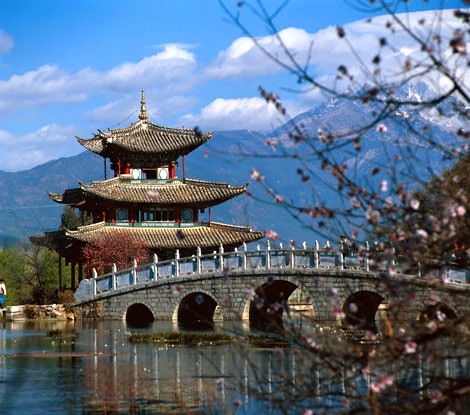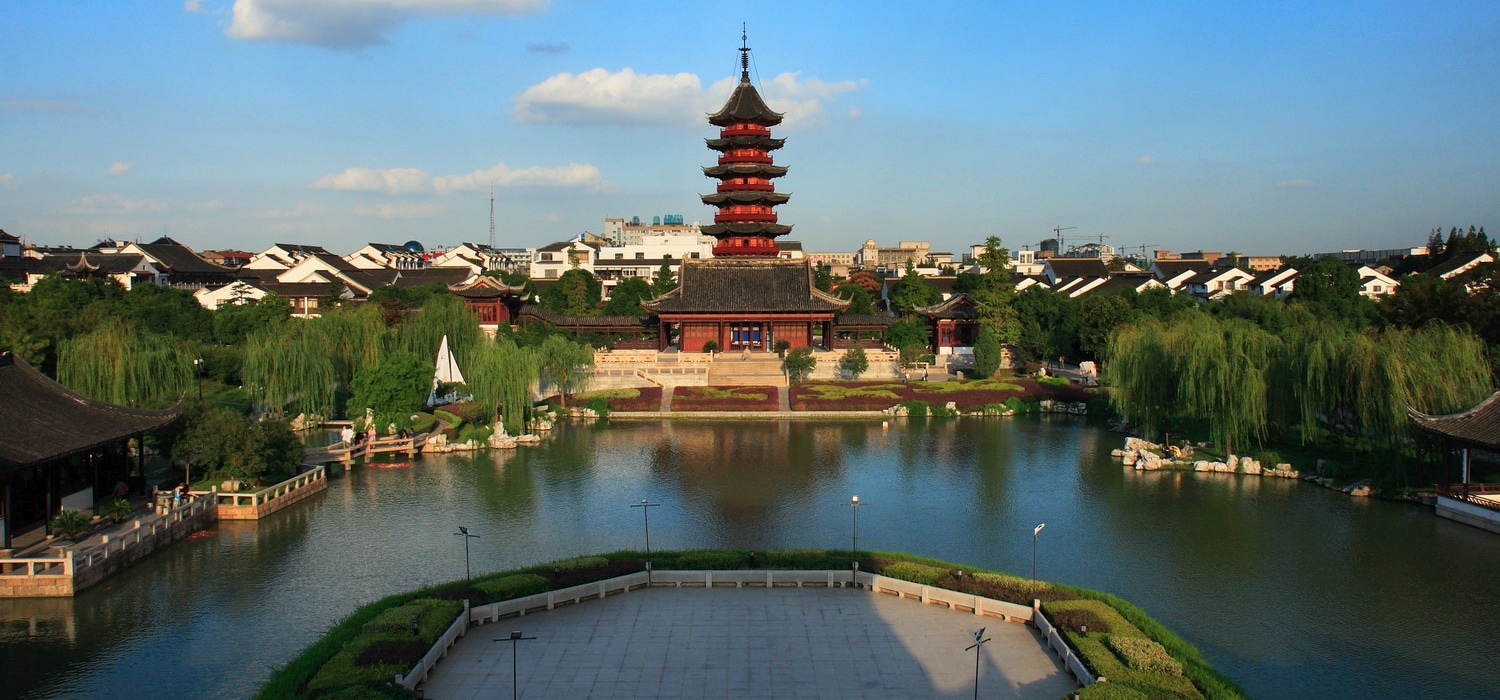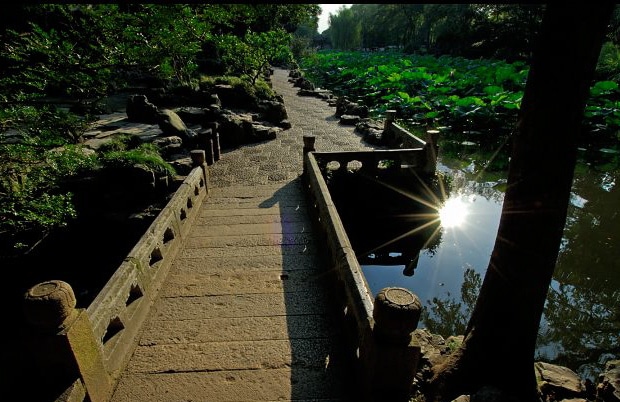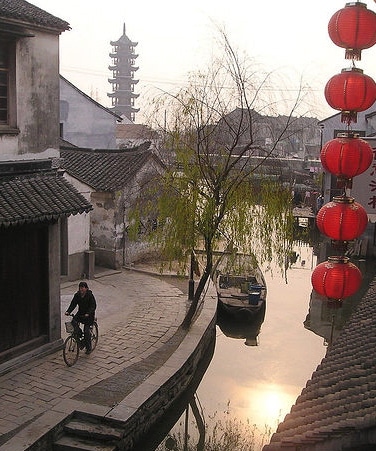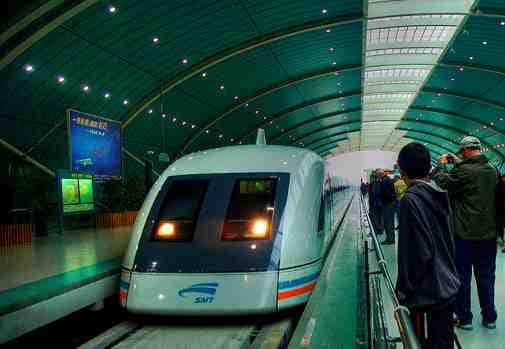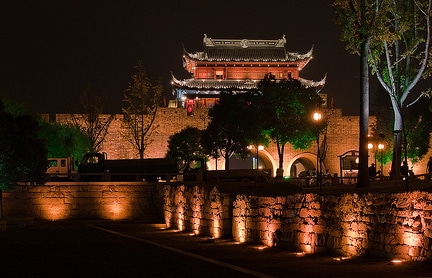Less than an hour away from Shanghai by train, Suzhou is known as a top tourist destination in China – worth visiting for a couple of days if you can fit it into your travel itinerary. And after the fast-paced crowds of Shanghai, you’ll breathe a sigh of relief in this “small” town (by Chinese standards) of 1 million.
Suzhou has been called the “Venice of the East” because it was built around a latticework of 24 canals. But Suzhou’s main tourist attractions are its classical Chinese gardens— intricately designed masterpieces that harmoniously blend surrounding buildings with nature (9 gardens are UNESCO World Heritage sites). So take a gondola ride through the canals and chill out with some tea as you listen to water babbling down the rocks and into the gardens before merging into peaceful frog ponds.
But before you get your expectations up of some garden Shangri La, Suzhou—located in the prosperous east coast near Shanghai—hasn’t been immune to the commercial development boom in China. Which means that Suzhou’s ancient charms are fast being bulldozed to make room for industrial areas and the drab “modern” buildings that the Chinese can’t seem to get enough of (are you sensing a trend here?).
But still, the city is still attractively photogenic with plenty of these tourist-friendly gardens dotted around Suzhou to enjoy—about 60 remaining compared to their heyday when there were some 300 privately owned gardens.
More Info & History
Location, location, location. One of the oldest towns in the Yangtze Basin, Suzhou dates back some 2,500 years ago, but didn’t take off until a thousand years later after the Grand Canal was built. Occupying a strategic position on the Grand Canal, Suzhou quickly became a major trading center for silk and other goods.
The longest canal in the world, the Grand Canal—like the Great Wall of China—was assembled over many years from smaller, existing pieces to facilitate commerce and war preparations. With the oldest sections dating back to the 5th century BC, it extends over 1,100 miles (1,800km) north to Beijing, ranking it with the Great Wall as one of China’s most impressive (but not as well known) engineering feats. Locals like to point out that while the Great Wall was designed to prevent communication, the Grand Canal was intended to promote it.
With the increased flow of trade, traders flooded in and set up shop in Suzhou. Money continued to pour into the city and local merchants got crazy rich. And naturally, the nouveau riche expended quite a bit of energy keeping up with the Zhous. Back then, the ultimate status symbol was having a kick-ass garden. So the arms race began as local fat cats tried to outdo each other with increasingly bigger and more spectacular gardens.
Later, Suzhou also benefited from its proximity to the Song dynasty’s new capital in nearby Hangzhou, resulting in a flood of academics, artists, merchants, and government big wigs who brought more wealth to the city. Similarly, Suzhou prospered after the first Ming Emperor founded his capital in nearby Nanjing (later moved back to Beijing).
The cumulative effect was that Suzhou became known in China as a place of culture, beauty and sophistication, as well as for as a hotspot for silk and wood-block carvings (two industries that are still going strong in the region today).
Oh yeah, another thing that Suzhou is known for among the Chinese is the legendary beauty of the area’s women. The Chinese love to make blanket generalizations about people based on where they’re from. One of their many proverbs says that, one should “marry in Suzhou, live in Hangzhou, eat in Guangzhou, and die in Liuzhou.” Similarly, when I lived in Taiwan, guys there would tell me that their dream was to marry a Japanese girl, drive a German car, and live in a big American house.
Travel by Train to Suzhou
Suzhou is convenientely located between Shanghai and Nanjing. Suzhou Railway Station is among the busiest passenger stations in China. The Shanghai–Nanjing/Beijing–Shanghai high-speed railways passes through Suzhou.
There are frequent high-speed trains from Suzhou to Shanghai, Kunshan, Wuxi, Zhenjiang, and Nanjing. It only takes 25 minutes to Shanghai, less than 1½ hours to Nanjing, and 5 hours to Beijing.
Learn and read on how to travel from Shanghai to Suzhou by train or car
Best Times to Visit Suzhou
The best times to visit Suzhou are March–May and September–November when the weather is comfortable and pleasant.
It is best if you visit on a weekday as it tends to be less crowed during this time than on a weekend and on holidays. Less than an hour away by high-speed train, Suzhou has become a weekend hangout for Shanghai folk, and the streets can be crowded.
Top 10 Things to Do In Suzhou
- Explore Old Town Suzhou Shopping Streets & Canals
- Climb Tiger Hill
- Take a day trip to Tongli Water Tower
- Make sure you explore a garden while in Suzhou
- Visit the Suzhou Industrial Park
- Go see how silk is made
- Enjoy Suzhou’s unique cuisine
- Visit the Suzhou Museum
- Take a train from Suzhou to Shanghai
- Walk around and embrace the culture

